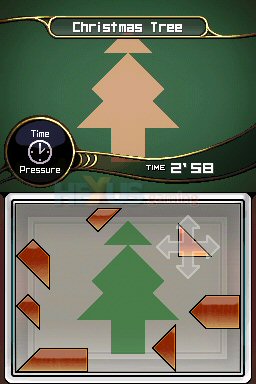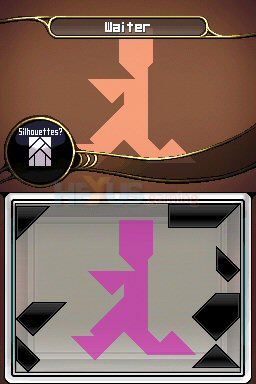Shape-shifting of the puzzling kind
Although the name of this latest Nintendo DS game may sound unfamiliar, it's extremely likely that you've dabbled with the type of puzzles that you'll encounter in NEVES at one time or another.It may be from your school days, from participating in an IQ or MENSA test or even from watching an episode of the Krypton Factor that you gained a familiarity with its concept, but whichever it is, it's unlikely that you'll need the tutorial to get to grips with the cognitive block-shifting puzzles.
NEVES is simply 'seven' spelt backwards, a number that refers to the seven different blocks/shapes available to you in the game. You're presented with a silhouette of an object and then you simply need to manipulate the shapes in order to fit them squarely into the corresponding profile.
There are a few different game modes on offer, though they all boil down to solving the same shape-moving puzzle. The primary mode is 'Silhouette', which throws up dozens of silhouettes that are made up from a number of different categories, including animals, transport, plants and structures. Each puzzle is presented one at a time and you're presented with the likes of a plane, a cow's head or even a coat hangar silhouette in which you need to place the shapes littered around the out-skirts of the screen.


In this particular mode, there's no time limit so you're free to experiment with shifting and twisting the blocks around. Once you've finished one shape, you're clear to move onto the next puzzle and once you've completed a set number of shapes you unlock the next area where you're presented with a more difficult, albeit the same, cognitive challenge.
Although the concept is simple, the puzzles are fiendishly difficult. NEVES is being targeted at a mature audience and even those who think they're puzzle veterans will struggle with some of the tasks. If you lack spatial awareness and problem solving skills you'll really be up against it, but if you're looking to improve those particular skills then NEVES does have a rapid learning curve, which is mainly due to the constant repetition of the tasks.
Read on...









